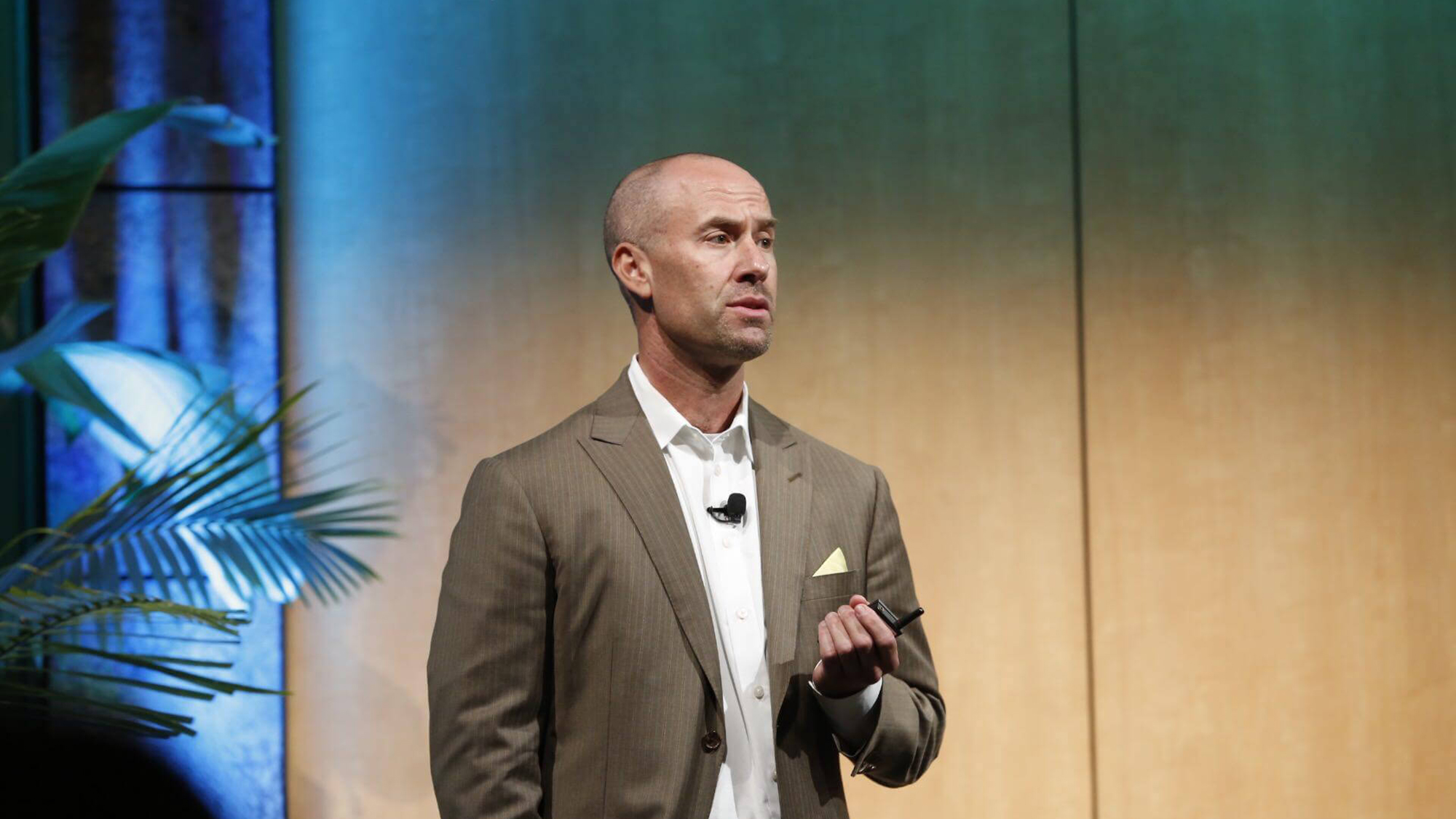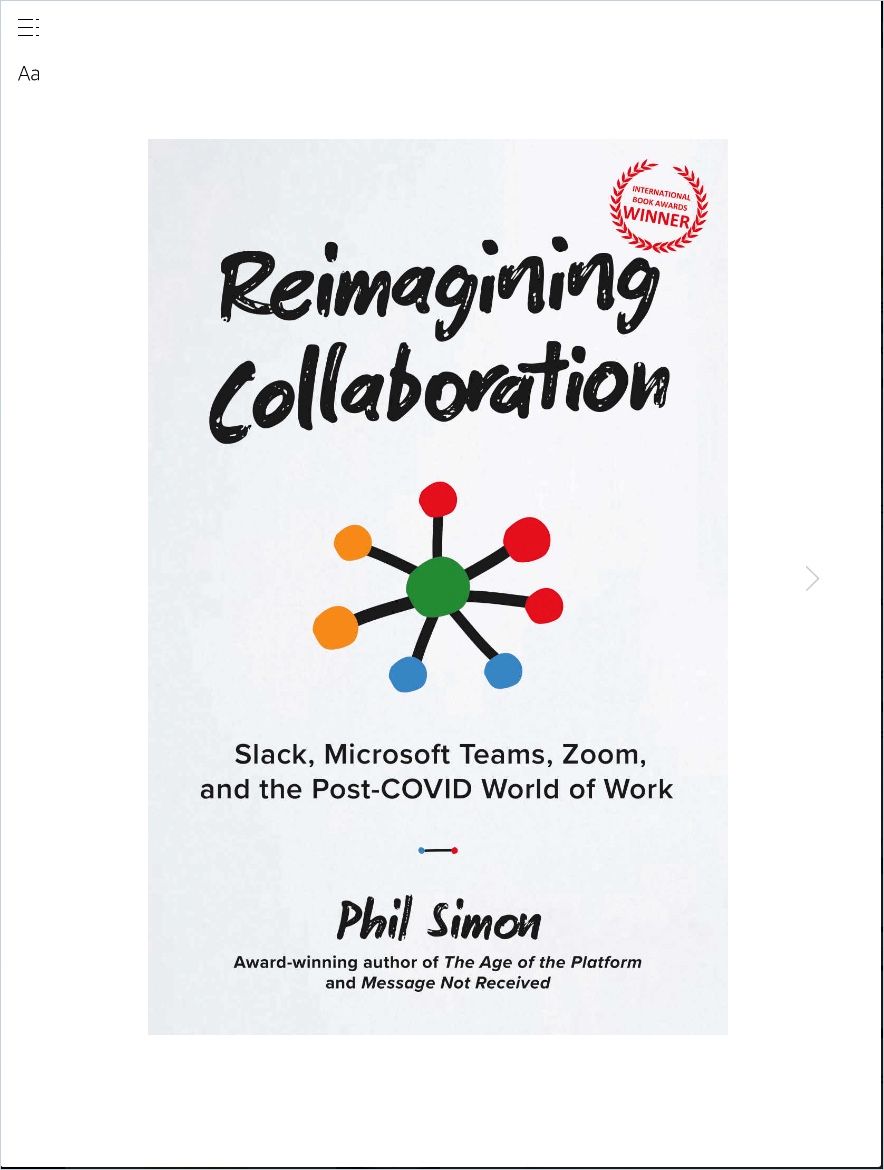“Hybrid Work Structures Are Here to Stay”

Phil, what prompted you to write your latest book, Reimagining Collaboration?
Phil Simon: A few reasons. First, for decades, many people have clung to email as their main communication and “collaboration” tool. As a result, they haven’t been using collaboration tools like Slack and Microsoft Teams in ways that they could and should. They were able to survive because most work and collaboration took place in person.
This, of course, changed in March of 2020…
Fast-forward to early August of 2020. My book, Zoom for Dummies, had just dropped – my follow-up to Slack for Dummies. Many folks were astounded that I could write 400 pages on just this one application. Trust me: Both books could have been much longer because the tools are jam-packed with robust functionality. By that point, we were five months into the pandemic. It had become clear that COVID-19 would irrevocably change how we work. Put differently, many if not most of us will not return to a Monday through Friday, nine-to-five work environment. Remote-first or -only environments mean that companies can save a great deal of money on real estate and employee salaries. What’s more, we have also seen that employees can effectively work remotely.

What’s wrong with using email for internal communication and collaboration?
Quite a bit. For starters, email simply does not lend itself to effective collaboration. Say that you are collaborating with someone on a project. I’m talking about more than exchanging a few discrete messages. The collaboration should take place in a proper hub. I’m talking about Slack, Microsoft Teams, Zoom, Workplace from Facebook, and Google Workspace. These hubs represent key parts to the hybrid future work precisely because they serve as digital headquarters. Bottom line: Employers need to put all work-related content and communications in a place that all current and future employees can access – irrespective of where they work. Email was never designed for this.
These hubs, then, are a great way to preserve organizational knowledge.
Yes. Let’s say that a new employee joins your team or company. It’s not practical to send her a slew of email attachments from the last five years to catch her up. She’ll quickly become overwhelmed. That deluge won’t help her get up to speed. Instead, refer her to the relevant channels in the internal collaboration hub. At the same time, when people leave the organization, their contributions are still often significant. Those contributions die if they only exist in a deactivated email inbox.
You also say that email is a drain on mental energy…
Email often lacks critical context and causes cognitive overload. With each message, you need to ask and answer a number of key questions. Who is this person? What is this email about? What do I have to do with the information, if anything? Ask yourself those questions 150 times a day, and you will be burned out by noon, never mind 5:00 p.m.
Many organizations don’t make the most out of the collaboration tools they have. Many readers may be surprised to learn that Zoom is much more than a video conferencing tool. How can organizations get the most out of tools like Teams and Zoom?
Today’s internal collaboration hubs ship with a wide array of powerful features. Unfortunately, as I mentioned in your first question, relatively few people know about them – never mind use them. For example, did you know that you can create channels in Zoom? You can also install third-party apps in Zoom.
Organizations that use Microsoft Teams, Zoom or Slack as Email 2.0 or Skype 2.0 are really missing out.
Using these internal collaboration hubs doesn’t obviate the need for other critical enterprise applications. Organizations still need content-management systems and enterprise-resource planning systems. Here’s where the Hub-Spoke Model of Collaboration is so important. With little to no technical knowledge, employees can connect most if not all of their other applications to those hubs.
As an individual or an organization, how do you go about deciding which tools to adopt?
I tell my clients that there are a lot of different factors. Let’s start with cost. You can absolutely use the free versions of Zoom or Slack, but you’ll have to deal with limitations. For example, with Slack, you can only search the most recent 5,000 messages. This may seem like a big number, but if 30 or 40 people in your company use it every day to send messages, you’ll quickly reach that limit.
Alternatively, say you already use Microsoft Teams to make video calls. If so, then why do you also need Zoom?
It’s a good question. Teams is really meant for a group of people who regularly work together. If you need to connect a lot with people outside your team for a discrete meeting, then Zoom may well represent the better option. Another factor is security. Free versions lack the same level of encryption as paid subscriptions.
Do organizations tend to use too many collaboration tools or too few?
Both. I lump organizations into three buckets. First, researching for the book, I discovered that upwards of two-thirds of large organizations in the United States use more than one internal collaboration hub. Second, on the other side of the spectrum, many organizations fail to use hubs at all. Many of these firms already pay for one (Microsoft Teams) by virtue of an Office 365 license. Finally, there’s the third and smallest group: the organizations that have successfully embraced the Hub-Spoke Model of Collaboration. They have successfully adopted internal collaboration hubs and have stitched them to different spokes: third-party apps that solve critical problems. As I peer into the future, more organizations will join this third group.
As I write in Reimagining Collaboration, pick one internal collaboration hub and stick with it.
People’s work habits are hard to change. What can a company do to have its employees go off email and adopt more appropriate collaboration tools?
With enterprise technology adoption, there’s always a learning curve. As a result, proper application training is essential. Moreover, leadership must show a commitment to internal collaboration hubs by using them themselves.
Consistency is key.
Consider the alternative. Say that hub adoption is uneven. Individual pockets of knowledge will exist throughout the organization. Employees will waste time looking for basic documents. Employees who use email effectively move conversations and knowledge away from the hub.
Brass tacks: We’re going to have to change our entrenched habits and work processes.
Some employees will adapt better than others. As for laggards, organizations must be willing to terminate employees who repeatedly refuse to use these new collaborative tools. That might sound draconian but, I’d argue, it’s essential for all of the reasons described in the book.
You pitch the idea of a new job role: Head of Remote Work. What would be some of the position’s key responsibilities?
Well, let me say this: A company need not hire a Head of Remote Work to effectively collaborate or embrace the Hub-Spoke Model of Collaboration. Still, formalizing this position makes a lot of sense in some cases. Although the jury is very much still out, the Head of Remote Work is a hybrid. It’s common for this person to come from a traditional HR background. At the same time, he or she possesses a profound understanding of contemporary collaboration technologies. In terms of job responsibilities, the person ensures that the organization offers collaboration-friendly policies. A Head of Remote Work helps redesign office space to accommodate a hybrid workforce. He or she also helps establish ground rules around remote work, such as when local employees need to be on-site or how to adjust the salaries of employees who move to lower-cost areas.
What role do you think hubs will play in the future of work?
We’re going to be interacting with these hubs in newer and deeper ways. Consider artificial intelligence and machine learning. Through these technologies and others, hubs will learn about how we work.
Consider booking appointments. Say goodbye to the manual back-and-forth that often exists today. That process will be fully automated.
You’ll get notifications, but in a very different way than we do today. They’ll be based on a number of factors, including the time of day and importance. And in some instances, the hub will notify you even when you don’t want to be disturbed.
If it is a true crisis, the hub will contact you.
Hybrid work structures are here to stay. The Hub-Spoke Model of Collaboration described in Reimagining Collaboration will play a key role. Hubs will become even more powerful, and there will be more ways to connect spokes. We won’t have to switch among 20 different applications anymore.
About the Author
Phil Simon, host of the Conversations About Collaboration podcast, also wrote Message Not Received and The Age of the Platform: How Amazon, Apple, Facebook, and Google Have Redefined Business.







